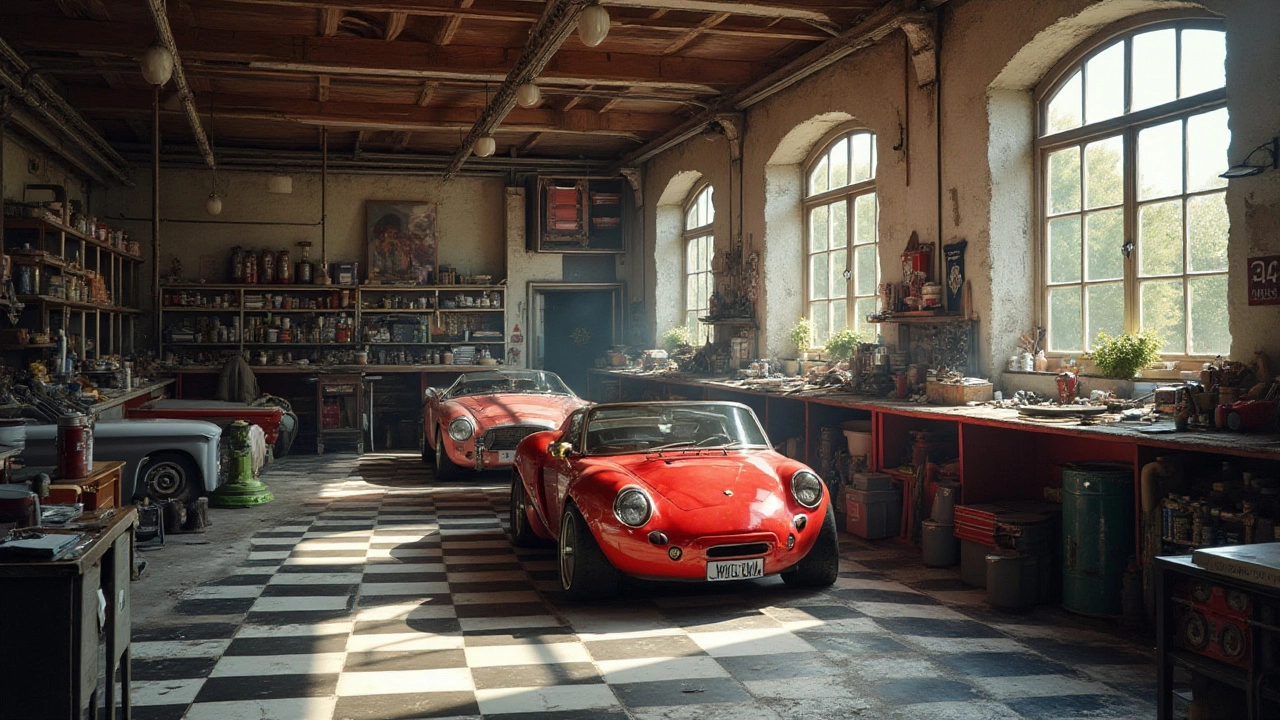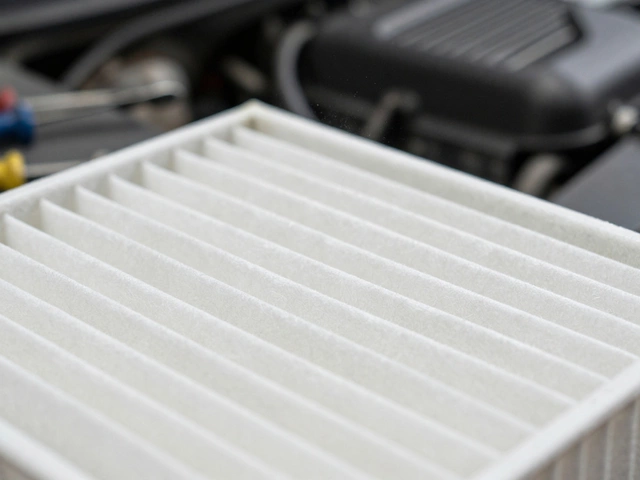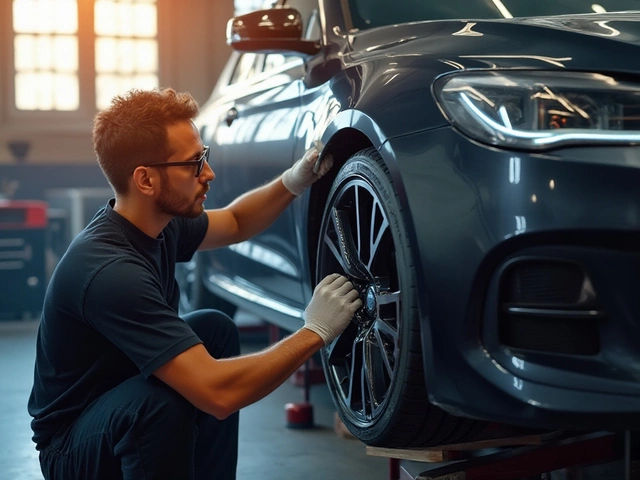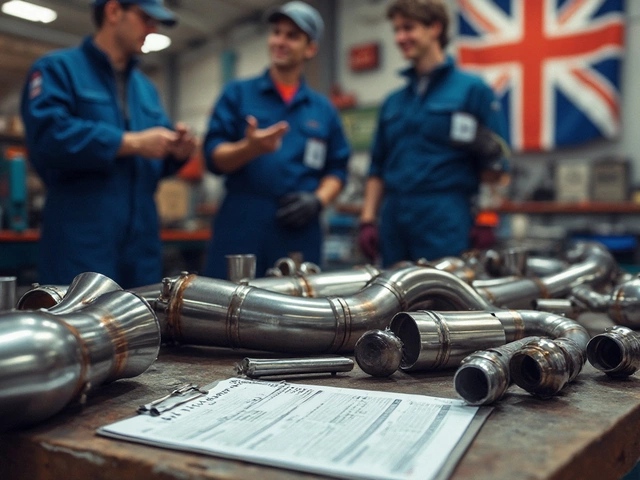Swapping bodies on a car isn't just something out of science fiction; it's a concept that captures the imagination of auto enthusiasts looking to personalize their vehicles. For those eager to break the mold, understanding the possibilities with car body swaps could open a world of customization.
Picture driving a unique vehicle that combines the sturdy chassis of one model with the sleek exterior of another. This art of transformation doesn't simply involve a paint job or new rims; it's about reimagining the car's entire appearance.
This article aims to guide you through the essentials of swapping car bodies, highlighting what you need to know before taking the plunge into the world of car body kits. Whether you're ready to modify your ride or simply curious, read on to discover the ins and outs of this fascinating automotive endeavor.
- Understanding Body Swaps
- Benefits of Customizing with Body Kits
- The Process of Swapping Bodies
- Legal and Practical Considerations
Understanding Body Swaps
Car body swaps might sound complex, but at its heart, it is about flexibility and creativity in vehicle design. Essentially, a body swap involves taking the chassis or the understructure of a vehicle and placing a different outer shell or body on top. This isn't just a matter of unscrewing old panels and slapping on new ones. It demands precision, patience, and a firm understanding of automotive engineering. It's like giving your car a new personality while retaining its foundational essence.
Many enthusiasts are drawn to body swaps because of the potential for unique expression. Imagine merging the classic body of a vintage Mustang with the tech-savvy internals of a Tesla. While this specific combination might not be in every garage, the principle remains captivating. The pursuit often embarks out of love for both the past and the present, creating a bridge between different eras of automotive design. A seasoned mechanic revealed, "There is unmatched satisfaction in pulling up with a car that carries a story in every curve and line."
The history of car modification shows that enthusiasts were swapping bodies even back in the 1950s. Hot rods, for example, often featured bodies from one model on a different frame entirely. This tradition of customization expanded into the modern era, offering a myriad of materials and styles to choose from. While traditional materials like steel remain stalwarts of these projects, contemporary car modders enjoy an array of options, from fiberglass to carbon fiber.
To delve deeper, let’s consider what makes a body swap feasible. Not every combination is possible or practical. Compatibility is crucial; the donor car’s chassis must marry well with the intended body. Measuring wheelbase, width, and other dimensions are only the beginning. One also needs to contemplate weight distribution and aerodynamics. An ill-fitting body can lead to handling issues, compromising safety and performance. For those pondering a vehicle transformation, expert consultation is often necessary to ensure a seamless fit and to avoid unforeseen complications.
With advancements in technology, today’s enthusiasts can leverage 3D modeling tools to predict fit and test designs before any physical work begins. This foresight minimizes potential mistakes and streamlines the modification process. As more and more gearheads venture into this arena, the community is ever-more inclusive, sharing advice on forums and showcasing their journeys on social media.
"The heart of car building beats strongest when two bodies are brought together, not unlike two souls finding their harmony," suggests a veteran car builder in one community post.
To navigate towards a successful body swap, it's essential to start with a clear vision. Every project begins with an idea—a concept of what the finished vehicle should achieve in appearance and performance. Crafting this vision involves research, talking to fellow enthusiasts who might have embarked on similar modifications, and sometimes even sketching out ideas. It’s both an art and a science, situated at the crossroads of creativity and mechanics.
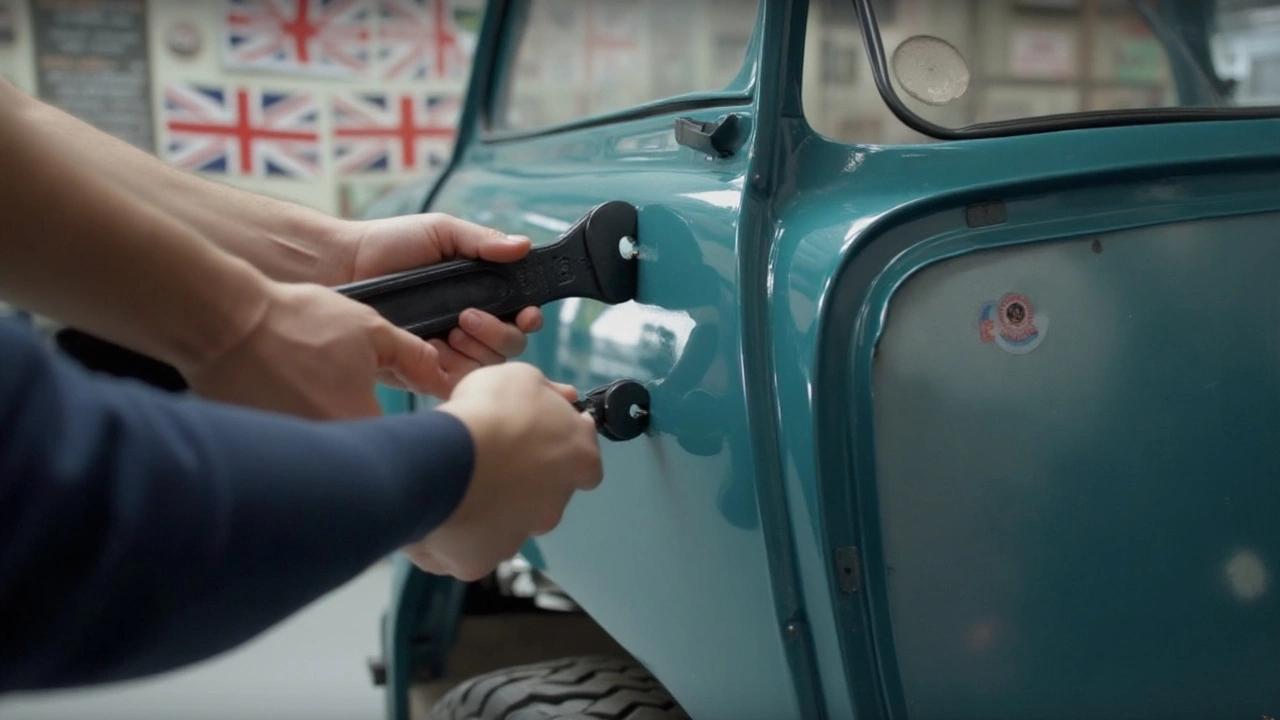
Benefits of Customizing with Body Kits
Customizing your vehicle with body kits opens up a world of possibilities, allowing you to go beyond factory designs and tailor a car that's uniquely yours. The benefits aren't just skin-deep; they extend into areas that might surprise you. A car fitted with the right components not only turns heads on the boulevard but can also enhance the performance, aerodynamics, and resale value of the vehicle.
Most notably, customization with body kits allows car enthusiasts to bring their creative visions to life. Imagine crafting a silhouette that's as original as your own fingerprint. This can embody anything from a fierce, aggressive sports car profile to a streamlined, elegant aesthetic. The expression of personality through this canvas of metal and fiberglass is what drives many to explore the wide selection of kits available in the market.
Body kits can significantly improve a car’s aerodynamics. Certain spoilers, side skirts, and bumpers are designed to reduce drag and increase the downforce, allowing the vehicle to cut through the wind more efficiently. A properly installed kit can lead to better fuel economy and improved handling, making those long drives or high-speed jaunts on the track exceptionally gratifying. It's not just about beauty—it's also about balance.
Enhanced performance often comes hand in hand with better engine cooling. Louvers and vented hoods are part of many kits and can help keep your engine compartment cooler by improving airflow. This can mean enhanced durability and potentially better performance, which are attractive bonuses for any car enthusiast looking to push their ride to its limits.
"Body kits can turn a plain Jane into a unique masterpiece," notes renowned car designer Elise Brighton. "Much like a well-tailored suit, the right body kit can make all the difference, capturing attention and leaving an impression wherever it goes."
Moreover, customization can positively impact the resale value of a vehicle, especially when done tastefully and professionally. A distinct car that stands out from others on the market is a desired commodity among collectors and car lovers who yearn for something less ordinary. This approach can transform a depreciating asset into potentially a more desirable purchase.
Whether seeking to express individuality, improve performance, or enhance value, customizing with body kits offers a plethora of benefits that go beyond mere aesthetics. The choice to engage in this transformative practice reflects a passion for autos and an appreciation for creativity and innovation.

The Process of Swapping Bodies
Venturing into the realm of car body swap projects is akin to stepping into a workshop of dreams where imagination sets the limits. This isn't a task for the faint-hearted; it demands a mix of creativity, technical know-how, and a passion for vehicle transformation. A successful body swap reinvents your car's identity, often blending the best of two models. The process, while rewarding, can be complex and requires an attentive eye for details.
Swapping bodies typically begins with a thorough analysis of both donor and recipient vehicles. Compatibility is king here; ensure that the two models share similar dimensions in chassis and wheelbase. Measurement precision is a must as even minor discrepancies can lead to significant challenges down the line. Before embarking on the swap, check the structural integrity of both vehicles. It's not uncommon for enthusiasts to leverage CAD software to visualize adjustments and predict fit.
Once you're certain about the compatibility, disassemble the donor vehicle’s body panels with care. This involves removing doors, fenders, hood, and other external elements. Remember, patience is crucial; impulsive moves might result in damage—turning your dream mod into a costly blunder. Ensure you have a solid labeling system during this disassembly; keeping track of where each component belongs will save you headaches during reassembly.
"The creative process in car body swaps is akin to sculpting," remarks custom shop veteran Mike Thompson. "You take raw materials and reshape them into something that reflects your vision. It's part art, part science."
Fitting the donor body onto the recipient's chassis is where the real magic happens. This can often involve custom fabrications, as the connection points between the body and chassis may need adjustments. Rigorous trial fits will help identify parts that require cutting, welding, or reinforcing. Investing in high-quality brackets and mounts can be beneficial; they offer robustness and reduce vibrations, ensuring your car remains stable under stress.
The electrical and mechanical connections form the next step. This involves realigning the wiring harnesses, verifying sensor placements, and ensuring all moving parts function seamlessly. It's advisable to have an expert technician review the electronic systems; modern vehicles have intricate networks that are vital for overall performance. Don't overlook the suspension and brake systems—they should be recalibrated to match the new body specifications for optimal safety and control.
Completing a car modification project as complex as a body swap culminates with a meticulous quality check. This means safety inspections, ensuring all components function as planned, and sealing any potential leaks in the reassembled structure. Lastly, take your newly transformed vehicle for a test drive to feel how it adapts on different terrains. The journey from two separate cars to one personalized masterpiece is indeed a tale of dedication, challenges, and automotive evolution.
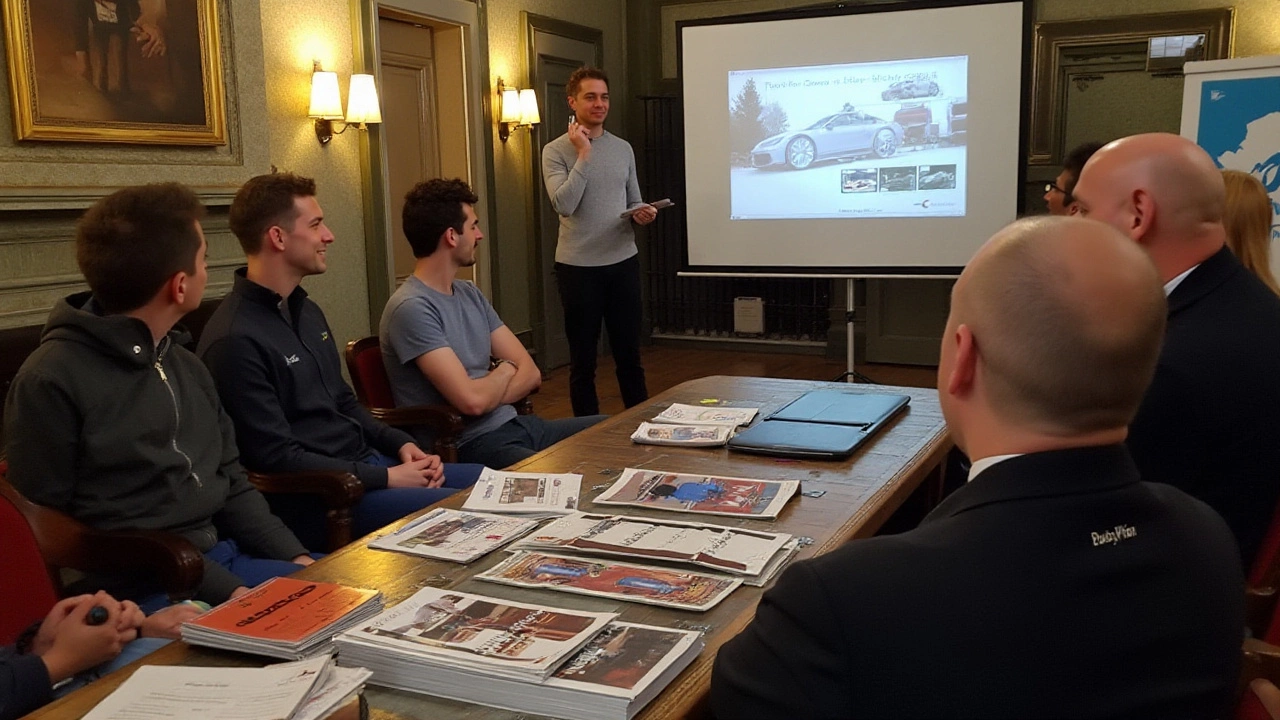
Legal and Practical Considerations
Engaging in car body swaps is an exciting venture, but before diving headlong into the process, it's crucial to understand the legal lado and practical side of things. Every country, and often every state or province, can have its unique legislation regarding what modifications are permitted on vehicles. Ignoring these can result in serious legal issues, ranging from fines to the outright inability to register the modified car for road use.
The first step is to research the specific laws concerning car modifications in your area. Many regions have stringent emissions regulations that your modified vehicle must still meet, even with a new body kit in place. If your body swap includes a change in weight or aerodynamics, it could affect fuel consumption and emissions, making it vital to verify these figures are within legal limits.
Another key consideration is insurance. Often, insurers have specific policies regarding modified vehicles, and failing to declare a car modification can void your coverage. Engaging with your insurance company early on can help ensure you remain compliant. It's advisable to document every step of the modification process, including receipts, to validate the car's transformation.
Considering the practical challenges also comes highly recommended. A body swap isn't akin to changing tires; it requires a degree of mechanical expertise and the right tools. If you’re not familiar with the process, engaging a professional is highly advisable. They will not only possess the necessary tools but will also ensure that the swap is correctly executed without compromising vehicle safety features like airbags or crumple zones.
Lastly, aesthetics are more than skin-deep. Before endeavoring with a body swap, visualize how the new body will interact with the existing chassis. This can be crucial: not all bodies fit perfectly with every chassis, and custom mounts may need crafting to ensure everything lines up properly. The aesthetic payoff is undeniable when done well, but the preparation phase is key to success. Consider consulting with car enthusiasts who’ve traveled this road before; communities often have insights that can facilitate smoother outcomes and avoid potential pitfalls.

